#Prizren Fortress
Photo

Prizren Fortress (Albanian: Каlаја e Prizrenit; Serbian: Призренски град, Prizrenski grad) is a hilltop fortification in Prizren in Kosovo. It overlooks the Prizren River which flows through Prizren, which developed around the fortress. The site of the fortress of Prizren has seen habitation and use since the Bronze Age (ca. 2000). In late antiquity it was part of the defensive fortification system in western Dardania and was reconstructed in the era of eastern Roman Emperor Justinian. Byzantine rule in the region ended definitively in 1219–20 as the Serbian Nemanjić dynasty controlled the fort until 1371.
Since 1371, a series of regional feudal rulers came to control Prizren and its fort: the Balšić, the Dukagjini, the Hrebeljanović and finally the Branković, often with Ottoman support. The Ottoman Empire assumed direct control after 1450 and over time turned the fort into a central stronghold in the Eyalet of Rumelia. Much of the modern fortress dates to the 18th century reconstruction phase.
The fortress is situated on a dominant hill at the eastern part of the town of Prizren, set on a strategic position, contoured with lines that follow distinguished features of the terrain's natural morphology. Archaeological excavations were carried out in 1969 and then again in 2004 and 2009–2011. They resulted in the discovery of the infrastructure, which incorporates rampart walls enforced with towers, casemates, labyrinth corridors, depots, and other accompanying inner rooms and dwellings. It was declared a Monument of Culture of Exceptional Importance in 1948.
6 notes
·
View notes
Text

Fjord-like … Perast town in the Bay of Kotor, Montenegro. Photograph: Olga_Gavrilova/Getty Images
Wild East (Alternative Europe): Five Balkan Countries To Discover For Your Next Holiday
Done Spain, Italy and Greece? These countries offer spectacular landscapes, unspoilt swimming spots, ancient towns – and affordable prices
— Rachel Dixon | Sunday 7 August 2022
Montenegro
With the Adriatic to the south and mountain ranges in the north, Montenegro is an easy place to combine a beach break with a more active holiday. The beach scene is centred on the medieval walled city of Budva, which has a 22-mile strip of sandy and pebbly coastline. Lake Skadar, southern Europe’s biggest, is about an hour’s drive away, perfect for boating among water lilies and Dalmatian pelicans.
Fjord-like, Unesco-listed Bay of Kotor, encircled by mountains, is unmissable. There are several medieval towns, numerous churches and monasteries around its shores; from baroque Perast, sightseers can visit the islet of Our Lady of the Rocks. In Kotor town, 1,355 steps lead to the Sveti Ivan fortress, with spectacular views.
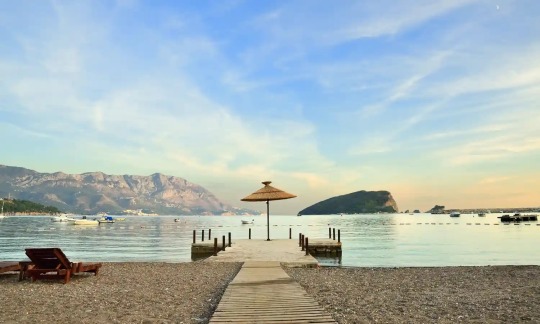
Budva. Photograph: Kuriyama Chikara/Getty Images
Heading north, sights include the mountain-top mausoleum of 19th-century ruler Petar II Petrović-Njegoš; Cetinje, the former capital; and the Ostrog Monastery, built into a cliff. Durmitor national park, with its forests, lakes and mountains, is the ultimate destination for outdoor adventure. Zabljak, highest town in the Balkans (1,456 metres), is a good base. Visitors can zipline across the 1.3km-deep Tara Canyon; go white-water rafting on the Tara river; swim in the Black Lake; or brave wolves and bears as they hike 25 marked trails.
Kosovo

Mirusha waterfalls are in a protected park in central Kosovo known for its canyons and karst landscape. Photograph: Olivier Wullen/Alamy
Kosovo declared independence from Serbia in 2008 and remains a largely undiscovered tourist destination for Britons, who perhaps still associate it with the year-long war in 1998. But today it is a safe place to travel, with few crowds and low prices. Landlocked Kosovo comprises two major plains surrounded by mountains with 50 peaks over 2,000 metres. That means great hiking, horse riding and skiing. With no sea, swimming in natural pools is popular: the Mirusha Waterfalls have canyons, caves and 13 lakes. There is a lively nightlife scene in Pristina, the capital, and in the second city Prizren. It’s partly thanks to this Balkan state having the youngest population in Europe – more than 65% of people are under 30. The two cities also have many mosques, museums and monuments, including Pristina’s Emin Gjiku ethnographic museum and the Newborn monument, unveiled for independence and painted in a different style every year.
Elsewhere, top sights include four Unesco-listed monasteries and churches – Dečani, Peć, Gračanica and Ljeviš; the Bear Sanctuary, home to European brown bears rescued from captivity by the charity Four Paws; and Gadime Cave, full of crystallised stalagmites and stalactites.
Slovenia

Ljubljana is a city of baroque and Habsburg buildings. Photograph: kasto80/Getty Images
Slovenia has a charming capital city; mountains, lakes and forests; fine wines; and even a short stretch of coastline. Ljubljana, the compact capital, is built around the river Ljubljanica, with baroque and Habsburg buildings on both banks. A glass of wine on a riverside terrace is hard to beat, but the city also has a hilltop castle, art galleries, theatres and museums (featuring Europe’s only complete mammoth skeleton at the Museum of Natural History), iconic 20th-century architecture by Slovene Jože Plečnik, and wooded Tivoli Park.
Piran is the loveliest town on the Slovenian coast, with Italianate architecture reflecting centuries of Venetian rule
In the north-west of the country, the top sights are the spectacular Lakes Bled and Bohinj in the Julian Alps. On the other side of the mountains, the less-visited Soča Valley offers hiking, rafting and kayaking in summer, and skiing and snowboarding in winter.
Heading south, must-visits include the Postojna and Škocjan caves, and Predjama Castle, built into a cave mouth. Piran is the postcard town on the coast, with Italianate architecture reflecting centuries of Venetian rule.
East Slovenia is wine country – lively Maribor, the second city, boasts the world’s oldest vine – and is a good choice for a farm stay. Ptuj, the oldest town in Slovenia, is a pretty place for a day trip.
Bosnia and Herzegovina

Hikers in the Sutjeska national park. Photograph: Witold Skrypczak/Alamy
Another country associated with 1990s warfare, Bosnia and Herzegovina is back on the backpacker trail. The capital, Sarajevo, has been likened to a miniature Istanbul or Jerusalem, with its old town, Baščaršija, full of bazaars, mosques and restaurants. But recent history hasn’t been forgotten: the Historical Museum and Tunnel Museum both tell the story of the four-year siege that killed 10,000 people in the 1990s.
Mostar, in the south, is the second-biggest draw, famed for its beautiful Old Bridge – visitors can pay to dive off it if they dare. Less touristy (and longer) is Arslanagić Bridge in the pretty town of Trebinje in the far south-west. Other notable towns include Travnik, the former Ottoman capital, and Jajce, with a spectacular waterfall.
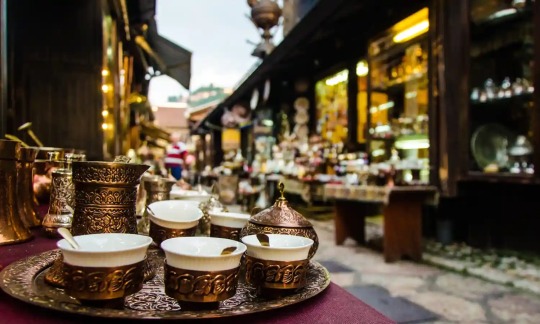
Baščaršija, Sarajevo’s old town. Photograph: Federica Gentile/Getty Images
White-water rafting is popular from March to October; one of the best rafting regions is around the town of Bihać, handy for the rapids of the Una river. Other active options include multi-day hikes in the Sutjeska national park, overnighting in mountain huts, and the 10-day TransDinarica mountain biking trail from Mostar to Sarajevo. Riders stay in B&Bs and homestays and eat homegrown food. In winter, there is affordable skiing in the Bjelašnica and Jahorina mountains south of Sarajevo.
North Macedonia

North Macedonia is blessed with lakes. Photograph: AleksandarGeorgiev/Getty Images
North Macedonia – so-called since 2019 – is a mountainous but green Balkan state. While it may be landlocked, it is blessed with lakes: most famously Ohrid, one of Europe’s oldest and deepest, but also Prespa, Dojran and more than 50 smaller glacial lakes.
Unesco-listed Lake Ohrid is the top attraction, surrounded by ancient monasteries, beach bars and seafood restaurants. Activities include lakeside cooking classes, e-biking, boat trips and paragliding. The town of the same name is full of churches and monuments, and dotted along the lake are picturesque fishing villages.
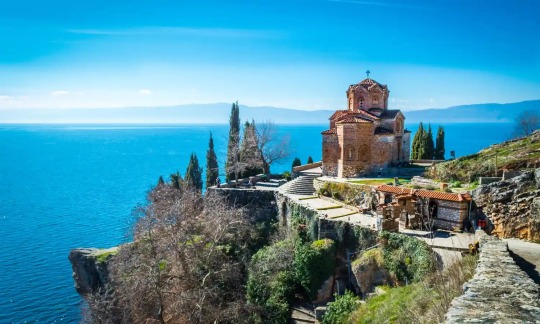
Church of St John at Kaneo, Lake Ohrid. Photograph: Saraginov/Getty Images
Skopje, the capital, is less immediately appealing, but retains a Byzantine fort and an Ottoman centre, plus modern additions such as the Museum of Contemporary Art. Mavrovo national park, on another lake and home to bears, wolves and lynx, offers hiking, biking, horse riding and swimming in the summer, and skiing in the winter. It’s also home to the picturesque, 11th-century Sveti Jovan Bigorski monastery. The other national parks are Galičica, found between lakes Ohrid and Prespa, and Pelister, a mountain with two glacial lakes.
4 notes
·
View notes
Text
Today's adventure: experiencing first hand that the main advantage of having a fortress in the mountains. Enemies very likely to die of exhaustion just trying to get up the first hill.

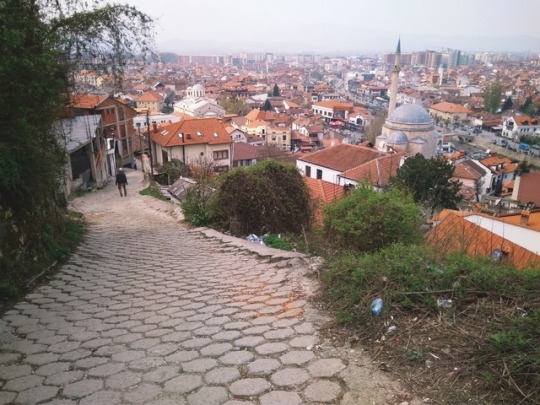
#somehow i failed to look much at the fortress and went straight to the walking trail behind it#probably the dehydration#kosovo#prizren#eastern europe
16 notes
·
View notes
Photo

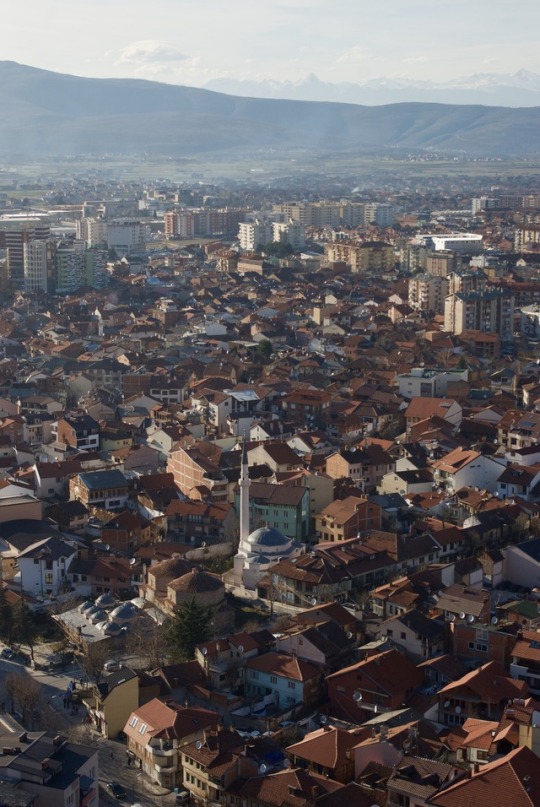
Taking the High Ground
#Prizren#Kosovo#Balkans#Mountains#Fortress#City#City view#Bird's eye view#houses#mosque#church#river
6 notes
·
View notes
Photo

50 POEMS FOR SNOW / OTOČAC
Utvrda Fortica, prvi dan snijega u 19 sati.
Pjesme čitaju: Goran Jurković, Berislav Kostelac i Ramona Adriana Vukelić.
Festival 50 Poems for Snow održava se u Otočcu drugu godinu za redom i u organizaciji Kulturne udruga Baštinica.
Ovozimska izdanja 50 Poems for Snow posvećena su Dinosu Christanopoulosu.
Zahvala: Manja Kostelac-Gomerčić
_
50 POEMS FOR SNOW / OTOČAC (Croatia)
Fortica Fortress, first day of snowfall at 7 pm.
Poems will be read by: Goran Jurković, Berislav Kostelac and Ramona Adriana Vukelić.
50 Poems for Snow festival takes place in Otočac for the second time. It is organized by Kulturna udruga Baštinica (Bastinica Cultural Association).
This winter’s editions of 50 Poems for Snow are dedicated to Dinos Christainopoulos.
Acknowledgement: Manja Kostelac-Gomerčić
_
50 Poems for Snow is an international no-budget poetry festival taking place each year in a number of cities on the day of the first snowfall. The festival takes place at night and in the outdoors. Three poets perform few poems of their own, each of them adding one more by a classic author to whom the festival is dedicated that particular year.
The festival was founded in Zagreb in 2012 by Aleksandar Hut Kono and Saša Šimpraga. Since then and so far 50 Poems for Snow editions were held in Belgrade, Colomiers, Čakovec, Delnice, Helsinki, Karlovac, Koprivnica, Maribor, Novi Sad, Osijek, Otočac, Prishtina, Prizren, Ravne na Koroškem, Sinj, Sisak, Sofia, Stockhlom, Toulouse, Vienna, Yerevan and Zagreb.
This winter, 50 Poems for Snow is taking place in more than 20 cities and 10 countries in Europe and North America. Current list of cities may be found here.
_
If interested in organizing local edition of 50 Poems for Snow in your city, please contact us. The details may be found here.
_
Follow us on Facebook here.
1 note
·
View note
Photo

Repost from @meet.the.serbs using repost_now_app - At the foot of the Prizren fortress Kaljaja, on a plateau with a view of Prizren, stands the Church of the Holy Savior, the endowment of the Serbian noble family Vladojević from the 14th century. The church was first mentioned in the founding charter of Serbian Emperor Dušan the Mighty issued to the monastery of the Holy Archangels near Prizren (around 1348). During the Ottoman rule in Serbia, the church was abandoned because it was outside the town where the Serbs were not allowed to go, and it was even used by the Turks as a stable. Last devastation was in March 2004, when it was set on fire and heavily damaged by the Albanian extremists. ----------‐------- У подножју призренске тврђаве Каљаје, на заравни с које се пружа поглед на Призрен, налази се црква Светог Спаса, задужбина призренске властелинске породице Владојевић из 14. века. Црква се први пут помиње у оснивачкој повељи цара Душана Силног, издатој манастиру Светих арханђела крај Призрена (око 1348). Током османске владавине у Србији, напуштена је јер се налазила изван вароши где Србима није било дозвољено да иду, а Турци су је чак користили и као шталу. Последње разарање догодило се у марту 2004. године, када је запаљена и тешко оштећена од стране албанских екстремиста. •••••••••••••••••••••••••••••••• Photo credits Aутор фотографије: ★ @zoranasemic ★ •••••••••••••••••••••••••••••••• Location / Локација: Prizren, Serbia / Призрен, Србија ••••••••••••••••••••••••••••••••• Пратите и даље @meet.the.serbs и заједно са нама изградите лепу слику нашег народа и земље. Користите таг #meettheserbs како би се и Ваша фотографија нашла у галерији најлепших слика. Хвала! •••••••••••••••••••••••••••••••••• Facebook: www.facebook.com/Meet.the.Serbs Twitter: www.twitter.com/MeetTheSerbs Pinterest: www.pinterest.com/MeetTheSerbs •••••••••••••••••••••••••••••••••• #Srbija #Србија #Сербия #Serbia #Srbi #Serbs #Срби https://www.instagram.com/p/CSMr1WvqqXB/?utm_medium=tumblr
0 notes
Photo

Summer in Prizren is pretty amazing I’d say. Besides rich culture, lovely people and amazing food for an incredibly low price, another reason to visit Prizren is Dokufest, which is an international short film festival held in the heart of Prizren. Dokufest starts in August and it usually lasts for about 12 days. There are multiple stages airing films every night and one of them is up in the Prizren fortress where the entire city can be seen from above. Besides films, there is also a music festival which is also a part of the Doku organisation. Dokufest was established in 2002. and has become one of the biggest film festivals in Balkan over the past years. Because of it’s amazing atmosphere this film festival is counting more and more international visitors every year.
#kosova#kosovë#kosovo#prizren#dokufest#filmfestival#summer#tourism#visitkosova#visitalbania#albanian#art#culture#music
6 notes
·
View notes
Photo
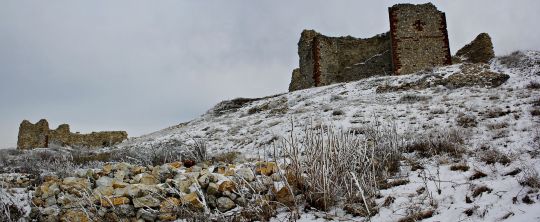
Novo Brdo Fortress (Serbian: Тврђава Ново Брдо / Tvrđava Novo Brdo; Albanian: Kalaja e Novobërdës or Kalaja e Artanës) is a medieval Serbian fortress in Kosovo. Its ruins are located near the town of Novo Brdo, about 40 kilometres (25 mi) east of Pristina. The fortress was built in the late 13th century by king Stephen Uroš II Milutin of Serbia to protect gold, silver, iron and lead mines which were abundant throughout the area. Novo Brdo was famous for its silver. Together with the castles of Prizren, 12 kilometres (7.5 mi) to the southwest, and Prilepac, 13 kilometres (8.1 mi) to the southeast, which guard access roads to the fortress, Novo Brdo helped form a defensive complex overlooking the lucrative mining operations. Novo Brdo was at its height during the Serbian Despotate (1402–1459), when it was the most important mining area and second most important town in Serbia. A significant number of Saxon miners, Albanian Catholics and a large Ragusan merchant colony lived within the town, which was ruled by a vojvoda, but also a governor (kefalija), because it was the seat of an administrative unit of the Despotate.
Systematic archaeological research of the site began in 1952. In 1948, during the Yugoslav era, the fortress of Novo Brdo was declared a Monument of Culture of Exceptional Importance. When Kosovo declared its independence in 2008 it was temporarily designated as a special protective site and since 2014 is on the database of protected cultural heritage of the Ministry of Culture of Kosovo.
2 notes
·
View notes
Photo

Watching the sunset over the city of Prizren from the path up to the fortress. Our second stop in Kosovo, this historic city was quick to make an impression. https://ift.tt/2Cm7O8P
0 notes
Photo
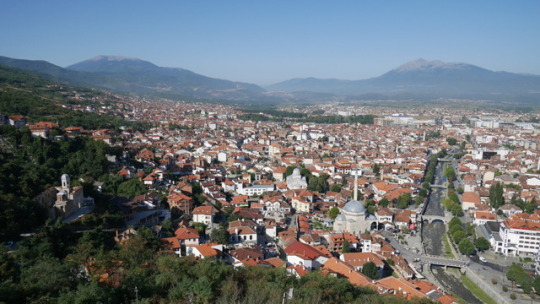
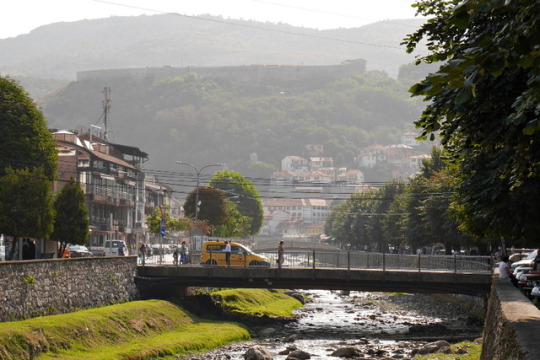




Prizren, Kosovo
August, 2017
2 notes
·
View notes
Text
Bitches in the Balkans.
The Balkans has been a region of the world that’s been on my radar for a while now. It’s not a region of Europe thats not quite as popular amongst tourists, is therefore less expensive that most other regions in Europe, and has warm weather & beaches, so when I found out that Gaby and Timnit could join me or some travelling, I KNEW this was where we would go.
After arriving in Belgrade around noon on Saturday, I checked into my hostel and spent the afternoon at the Yugoslavia museum and then wandering around a little, before my friends arrived at 7pm. We just missed a period of non-stop rain so the streets were still quite flooded and it was quite chilly out. That evening we did some bar hopping, and ended off the night at various bars that float along the river, called Splavs. The folllowing day, we took part in a walking tour, learned about the history of Yugoslavia, the relationship between Serbia and Kosovo. The tour took us through most of the historic city center, and ended at the fortress overlooking the confluence of the Danube and Sava rivers. After lunch we spent some time napping in a park, before visiting the Nikola Tesla Museum and eventually eating the most delicious and coupious amount of food possibly that I’ve ever had in my life.

That night, we made our way to Sarajevo, capital city of Bosnia & Herzegovina, which was probably the most eye opening part of the trip. It was quite somber walking through the Museum of Crimes Against Humanity and Genocide and learning about the city’s dark & recent history, then going on a walking tour and being able to actually see physical damage (bullet holes) that was done to a lot of the buildings, which have not been repaired yet due to finances and legal reasons. We got hit with quite a bit of rain the Sarajevo, so we often took some breaks for Bosnian Coffee or a glass of wine at a sky bar. We also made a visit to the Tunnel of Hope (sort of like the Cuchi Tunnels in Saigon) that we’re used during the war for protection and safe transportation of goods. We met the most wonderful people in Sarajevo, notably an elderly man who let us into a museum 30 minutes after closing, (after having walked 15 minutes in the pouring rain), and the owner & employee of a bar we’d found, who spent hours talking to us after closing, telling us about their lives and their country, and offering us a round of drinks.
Mostar was quite touristy, (mostly Chinese tourist on day trips from Croatia), but we made sure to avoid the city center / Bazaar during peak hours. We visited a beautiful cemetery overlooking the city, and took a taxi to Blagaj, an old Muslim dervish house that sits on a cliff and river, where we got completely rained on. In the evening we partook in a walking tour, where we learned about the conflict/separation between the Bosnians and Croats in the city of Mostar. There are 2 of everything : school, hospital, church, mosque, one on each side of the divide. There is only 1 school right on the separation line / ’no man’s land’ where you can find a mix of Bosnians and Serbs, and where all classes are mixed together except for language and history. Mostar was definitely the city where there were the most abandoned/damaged buildings remaining from the war.
What touched us the most about Bosnia was its people and their incredible hospitality & openness, despite their gruesome past.

The middle chunk of our trip was spent in Croatia & Montenegro, where we got very little sleep, but lots of sun!! After a few hours in Split, grabbing lunch and wandering around the old town and pier, we boarded our ferry to the island of Hvar. Hvar was a really good time - we met a bunch of people, ate some good food and spent lots of time on the beach, hanging out at beach bars and dancing our butts off.
On top of our lack of sleep and terrible hangovers, it was excruciatingly hot in Dubrovnik and very difficult to find shade, so after our respective walking tours in the morning (my friends did the Game of Thrones tour while I just did a regular tour), we spent the rest of the day trying to stay indoors, and eventually took a taxi to this amazing lookout point at the top of the mountain before heading to the bus station to kill time before our bus to Montenegro.

Kotor was one of my favourites. Not only is it breathtakingly beautiful, but we had a really good hostel experience and were so close to extending our stay an extra night! We spent our day wandering the old town, then hopping on a boat which brought us to the picturesque town of Perast and the beautiful island In the middle of the Bay, called Our Lady of the Rocks. Around sundown, Timnit and I ventured up to the fortress for an incredible view of the bay. It was definitely one of the most beautiful views I have ever seen!
Budva was super chill, since there’s not much to do besides the beach. It kind of felt like a Cancun of the Balkans - very built up city with resorts, casinos and lots of partying. I ended up wandering around the old town on my own for a while because Timnit and Gaby both had work to do on their computers. I walked the city walls and visited the citadel overlooking the water, and then went to the beach with Gaby for a bit before walking along the beach and grabbing diner all together.
On our last morning in Montenegro, I made the girls wake up at 5am to squeeze in a visit to Mount Lovcen before making our long journey to Prizren, Kosovo. We got there an hour before it opened (of course none of us thought to look at the opening times ahead of time), but the lovely man running the gate let us in early because there were quite a few people who were waiting there with us. We climbed the 461 steps to the Mausoleum of a famous Serbian/Montenegrin poet and philosopher, behind the mausoleum was a path that led onto a lookout point. Along the way, I lost both of my friends to their fear of heights, and honestly they really missed out cause it was incredible! We got our taxi to drop us off at the bus station in Budva, and then killed some tiime before beginning our long journey to Kosovo.

The last 4 days of my trip were really hot, so we ended up spending alot of time indoors. Gaby and Timnit were both working during our trip so we spent a few hours every day in a cafe, escaping the heat and being productive. Kosovo was really interesting! We spent 1 day in Prizren, 'the cultural capital', and a day in Pristina, the capital city with a population of 210,000, the average age being 25. (65% of the whole country's population is under the age of 35). There’s not a ton to do tourism-wise so we spent a lot of time sitting in cafes and bars, and in Pristina, the capital city, we decided to do a walking tour to get an overview of the city and learn a bit about its history. I’ll never forget getting chased around by a stray dog for 30 minutes, and all the locals laughing at the fact that we were so freaked out.
Overall, I was really impressed with how many western-influenced restaurants/bars there were and how western a lot of the people were dressed. Kosovars are a little obsessed with America, so most speak pretty good English, and there's even a huge statue of Bill Clinton in Pristina. He's considered a hero because he played a huge part in their liberation 20 years ago. During our trip we'd only met one person (right at the end of our trip) who had plans on going to Kosovo, so it was cool to be one of the few to experience this bit of unchartered territory.
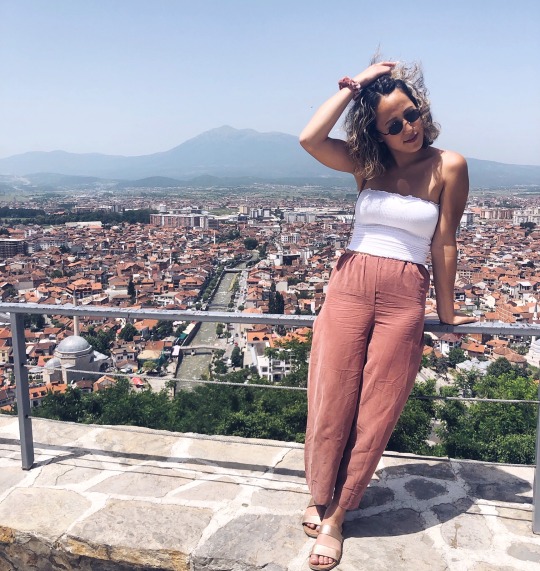
From Pristina, we took a short bus ride across the border to the capital city of Macedonia, Skopje. We didn't originally have plans to make it to Macedonia, but the cheapest flights home (by a landslide) were from Skopje, so we decided to spend some time there before flying home. After arriving in the evening and checking into our hostel, we headed to a restaurant which had been recommended to us by a hostel worker. Thank God he recommended it because it we had some of the best food ever, followed by one of the best nights of the entire trip. Long story short, the restaurant had live music and essentially turned into a bar full of locals, singing and dancing, the servers offered us free shots, which essentially turned into bottom-less free shots, and by the end of the night, we were riding around the streets of Skopje in a convertible with a bunch of locals, blasting music and singing at the top of our lungs. We spent most of the next day on a walking tour, then eating, drinking beers and hanging out with some solo travellers we had met on our walking tour. That night, we had a big dinner all together in a fancy restaurant, where we all treated ourselves to the most delicious 10€ steaks, then went to a Karaoke bar before saying goodbye to Gaby and Timnit. They both had very early morning flights that night/morning, and mine wasn't until 6pm, so I spent my last day with one of our new friends, taking a cable car to the top of Vodno mountain, and then visiting a museum before heading to the airport in the late afternoon.

My journey home was extremely long because my flight was 1 hour and 15 minutes delayed, and then I had to take an hour and a half bus ride to Paris from Beauvais airport, but hey I guess that's what I get for a 15€ flight!
I’m feeling really appreciative to not only have the opportunity to travel, but also to be able to do it with my friends who I've known for over 17 years! We had so much fun together laughing and learning, just like we did together in elementary school.
1 note
·
View note
Video

After leaving Nis, we crossed into Kosovo (a process that was accelerated by our bus driver’s awesomeness, but that was slowed down by passport issues) and visited Prishtina and Prizren. Prishtina turned out to be a very cute city (one that I wish we had more time to explore!) and we had a lot of interesting lectures here. We had lectures from Kosovo politicians working with the Prime Minister, politicians representing smaller/ democratic parties, UN workers, and NGO representatives. Some of the basic aspects of Kosovo’s current troubles included the issues of borders/ land swap with Serbia, poor economy, issues with isolation and inability to travel, lack of political direction, political corruption, the path towards EU integration, etc. Again, many of the politicians seemed to have contradictory stories on many issues like Kosovo’s treatment of Serbs in Kosovo, political corruption, and the future of Kosovo at large. Of course, I expected there to be differing views on issues, but again, I was left very confused and unable to really make any decisions for myself on what views were true and which were fiction. All of the speakers saw the value in a Serbia- independent Kosovo and all agreed that there needed to be talks between the two countries in order for progress to be made (which means ending the tariffs, which, interestingly, was told to be a political message by the Kosovo government in response to the Serbian government pushing countries not to recognize Kosovo).
Following our lectures in Pristina, we drove down to Prizren and had the amazing opportunity to stay in a monastery. From “Country Roads” singalongs to Rajkia shots with the head priest, I can surely say that this experience was unforgettable. The monastery’s natural beauty, Prizen’s vibrant town, and a beautiful fortress were so great to experience at the end of our Kosovo mini-trip!
0 notes
Photo
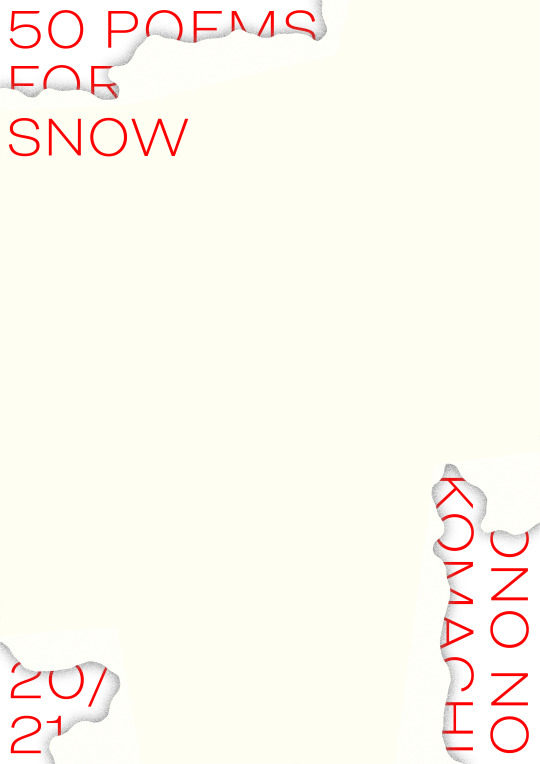
50 POEMS FOR SNOW / OTOČAC
Utvrda Fortica, prvi dan snijega u 19 sati.
Pjesme čitaju: Marina Majnarić, Jadranka Prša i Ivana Rudelić Burić.
Festival 50 Poems for Snow održava se u Otočcu treću godinu za redom i u organizaciji Kulturne udruga Baštinica.
Ovozimska izdanja 50 Poems for Snow posvećena su Ono no Komachi.
Zahvala: Manja Kostelac-Gomerčić
_
50 POEMS FOR SNOW / OTOČAC (Croatia)
Fortica Fortress, first day of snowfall at 7 pm.
Poems will be read by: Marina Majnarić, Jadranka Prša and Ivana Rudelić Burić.
50 Poems for Snow festival takes place in Otočac for the third time. It is organized by Kulturna udruga Baštinica (Bastinica Cultural Association).
This winter’s editions of 50 Poems for Snow are dedicated to Ono no Komachi.
Acknowledgement: Manja Kostelac-Gomerčić
_
50 Poems for Snow is an international no-budget poetry festival taking place each year in a number of cities on the day of the first snowfall. The festival takes place at night and in the outdoors. Three poets perform few poems of their own, each of them adding one more by a classic author to whom the festival is dedicated that particular year.
The festival was founded in Zagreb in 2012 by Aleksandar Hut Kono and Saša Šimpraga.
Since then and so far 50 Poems for Snow editions were held in Belgrade, Braemar, Colomiers, Čakovec, Delnice, Edinburgh, Helsinki, Karlovac, Koprivnica, Maribor, New York, Novi Sad, Osijek, Otočac, Prishtina, Prizren, Ravne na Koroškem, Sinj, Sisak, Sofia, Stockholm, Toulouse, Vienna, Yerevan and Zagreb.
If interested in organizing local edition of 50 Poems for Snow in your city, please contact us. The details may be found here.
Follow us on Facebook here.
0 notes
Photo
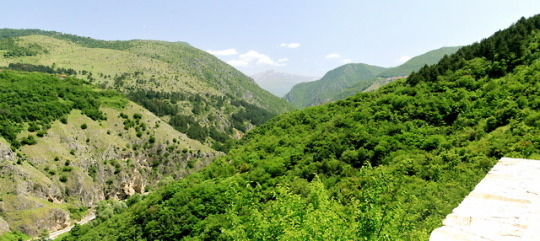
View from the Prizren Fortress ( Kosovo )
#view photography#view from the castel#nature photography#balkan travel#travel destination#prizren kosovo#prizren castle#mountains#travel photo#travel and landscape photography#travel around the world#around the world
1 note
·
View note
Photo

Day 12, Balkans Travel marathon: Prizren, Kosovo. When beauty us not in astonishing architecture or fabulous nature, but in an ensemble of lovely old houses with narrow crooked and crowded streets, of a mosque and church standing next to each other, tiny river in stone, mountains all around.. and jolly atmosphere:) Follow my Balkans travel marathon: 8 countries in 15 days! #instatravel #inspiration #travelideas #balkan #prizren #kosovo #hot ##citybreak #mountains #eurotrip #backpack #hiking #sunset #river #bridge #mosque #holidayspirit #vacation #fortress #church#nightlife #weekend #instagood #traveling #adventure #journey #roadtrip #goingout #amazing #travel (at Prizren, Kosovo)
#weekend#inspiration#instagood#backpack#goingout#fortress#vacation#prizren#nightlife#hot#citybreak#kosovo#mosque#sunset#roadtrip#balkan#travelideas#traveling#eurotrip#mountains#bridge#hiking#amazing#adventure#river#journey#holidayspirit#church#travel#instatravel
0 notes
